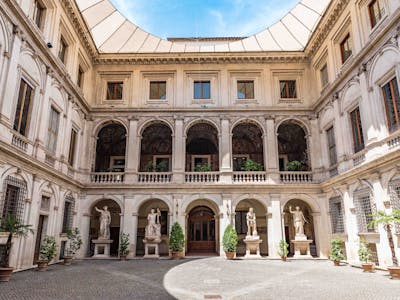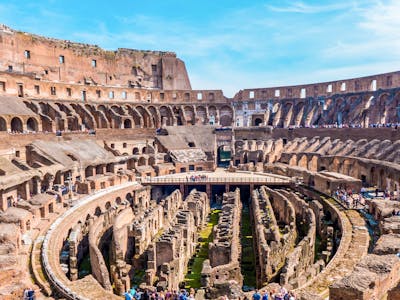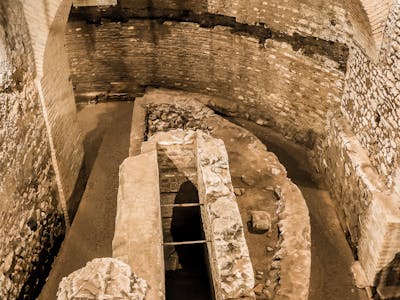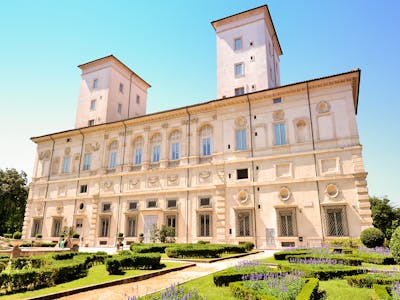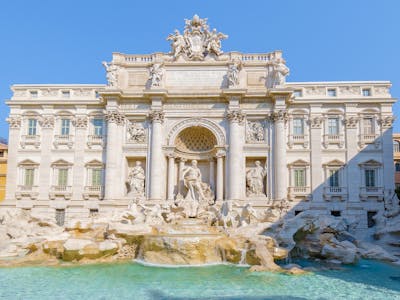The Baths of Diocletian, or Thermae Diocletian in Latin, is a massive ancient bathhouse complex located in Rome, Italy. It was built from AD 298 to 306 by the Roman emperor Diocletian and was one of the largest public baths in ancient Rome. The complex includes various chambers for bathing, exercise, and relaxation, as well as art collections and libraries. You can explore various chambers for bathing, exercise, and relaxation, as well as art collections and libraries. To truly appreciate the grandeur and historical significance of the Baths of Diocletian, continue reading here!
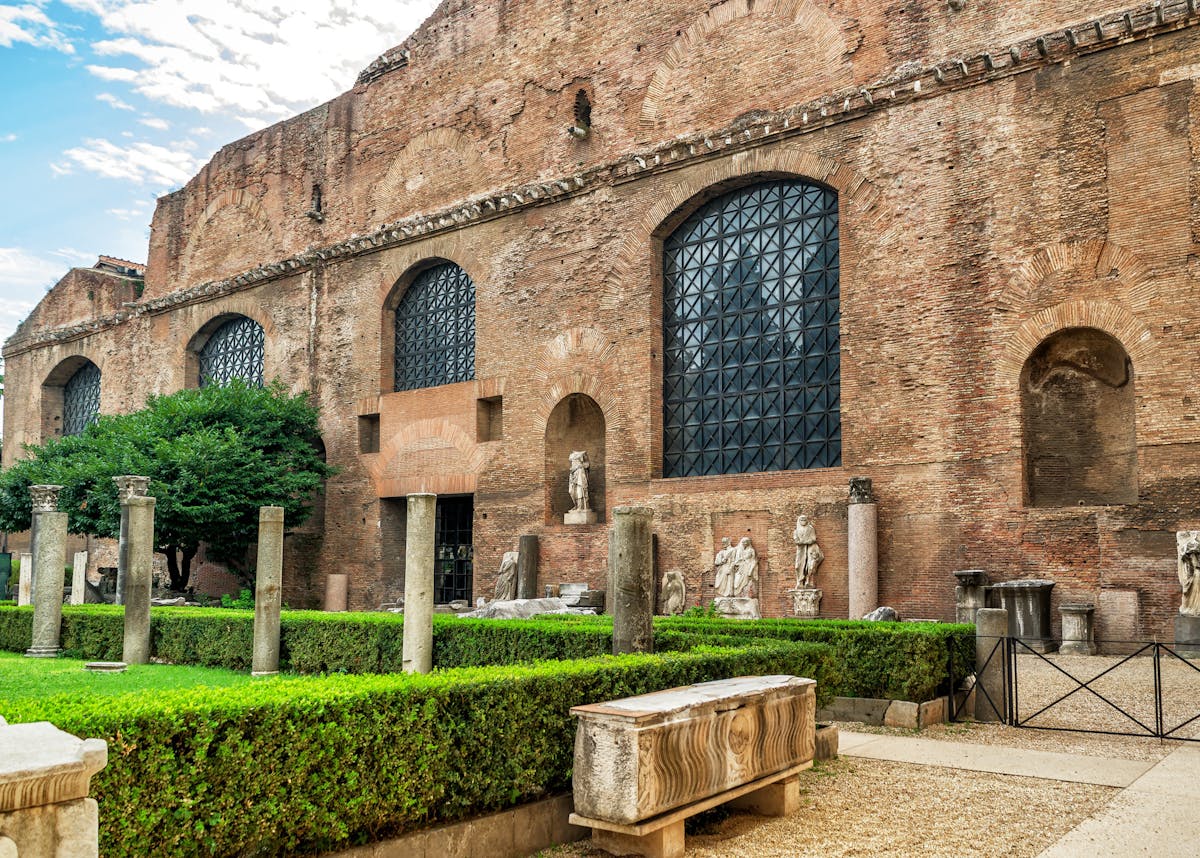
Baths of Diocletian - In A Nutshell
Handy information
| ⏰ Suggested Duration: | 1-2 hours |
| ☀️ Best Time to Visit: | Early morning or late afternoon |
| 🎟️ Audio Guided Tour: | Check Prices |
| 🚇 Closest Metro | Termini |
Must-see
Michelangelo's Cloister
Stunning mosaics and frescoes
Thermen Museum
Meridian Line
Things to know
Built between: 298 and 306 AD
Location: Rome
Emperor: Diocletian
Architectural design: Traditional Roman style
Opening Hours And Address
Tuesday-Sunday: 9.30 am - 7.45 pm
Closed on Mondays
Viale Enrico de Nicola, 78, 00185 Roma RM, Italy
Get Directions
Baths of Diocletian: Why You Need to Visit This Ancient Roman Marvel
- History: Visiting the Baths of Diocletian provides a glimpse into ancient Roman life while marveling at the architectural and engineering feats accomplished by the Romans over 1,700 years ago.
- Art: The Baths of Diocletian contain various art collections, including sculptures and frescoes, that provide insight into the artistic and cultural achievements of ancient Rome.
- Micheangelo’s Basilica of Santa Maria degli Angeli: Inside the complex, you'll find the basilica of Santa Maria degli Angeli e dei Martiri, which was designed by Michelangelo in the 16th century.
- Exhibitions: Learn about ancient Roman life through fascinating artifacts and multimedia installations.
- Libraries: The Baths of Diocletian were also home to extensive libraries, making it a center for scholarship and education in ancient Rome.
Baths of Diocletian Tickets
There are various ticket options available, including guided tours and special exhibitions. Don't miss out on this incredible opportunity to step back in time and experience the Baths of Diocletian for yourself!
The Baths of Diocletian History
The Baths of Diocletian were part of a larger project by the Roman emperors to build bigger and better public bathhouses. The complex covered 32 acres and could accommodate 3,000 bathers at once. The engineering behind the structure was impressive for its time, with a sophisticated water supply and drainage system. They were also a reflection of the power and wealth of the emperor, as well as a testament to the engineering skills of Roman architects.
The Baths of Diocletian were the site of important cultural and religious ceremonies, as well as political and social gatherings. However, after the fall of the Roman Empire, the baths fell into disrepair and were used for various purposes, including as a quarry for building materials. Today, the Baths of Diocletian remain a truly fascinating attraction to visit. The complex features a variety of exhibits and rooms, including portions of the original mosaic floors and sculptures that still stand today.
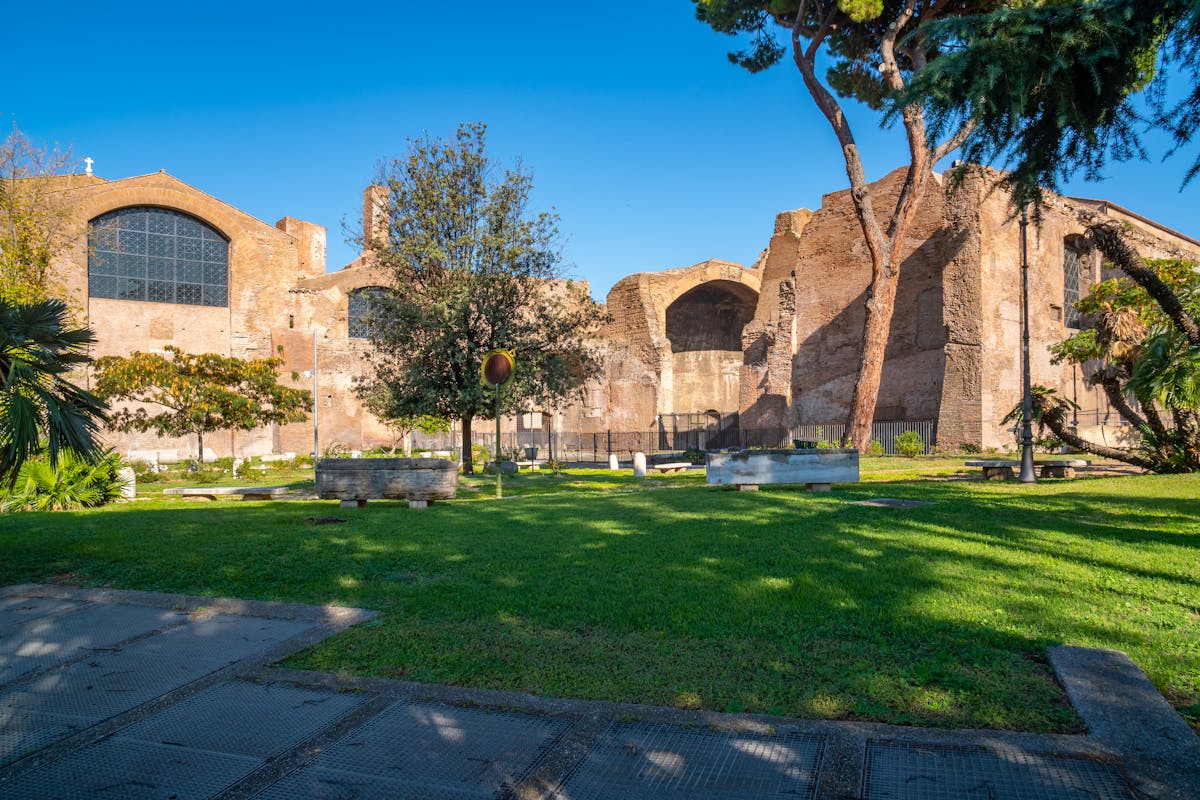
The Baths of Diocletian Architecture
The Baths of Diocletian were designed with a symmetrical layout, centered around an open-air rectangular courtyard that served as a gathering place for bathers. The complex also included a series of heated public rooms for relaxation, as well as cold-water plunge pools for invigoration. As you wander through the complex, you'll see ornate stonework, sculptures of mythological figures, and frescoes depicting scenes from daily life. The engineering prowess of the Romans is evident in the intricate network of underground tunnels and ducts that delivered hot and cold water throughout the complex. The complex also contained a gymnasium and a library, as well as gardens and outdoor spaces perfect for socializing.
Highlights of Baths of Diocletian in Rome
1The Natatio
The Natatio was an outdoor swimming pool that was an impressive 4000 square meter ie. approximately three times the size of a modern Olympic pool. The pool consisted of large overhead bronze mirrors to direct sunlight on the inside.
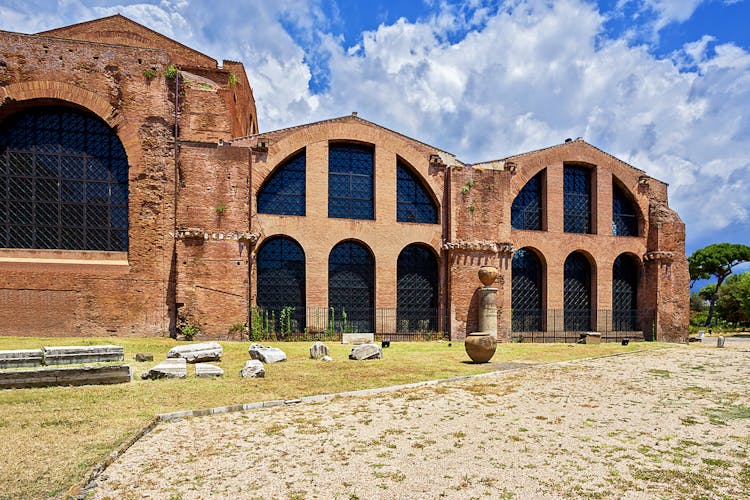
2Caldarium and Frigidarium
Another highlight of the Baths of Diocletian was the Caldarium, a room with a hot plunge pool and a hypocaust system that provided underfloor heating. The frigidarium, a room with a cold plunge pool, was located adjacent to the caldarium.
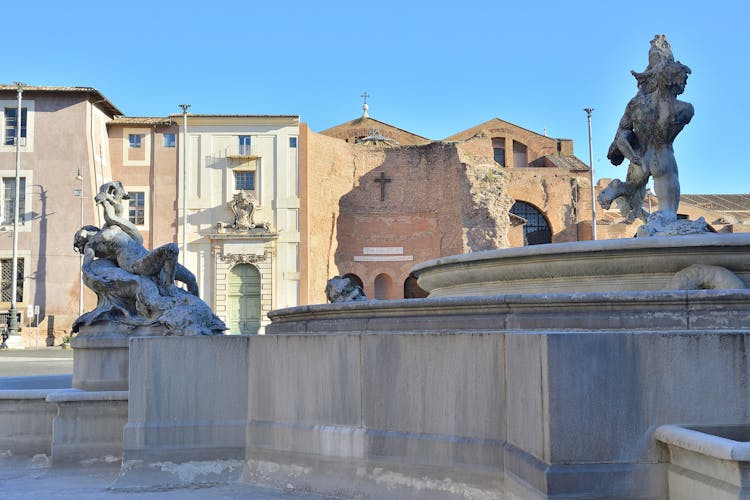
3 Church of Santa Maria degli Angeli
The Church of Santa Maria degli Angeli was built within the bathhouse complex in the 16th century by Michelangelo. It boasts a unique architectural design that blends the original Roman structures with Renaissance features.
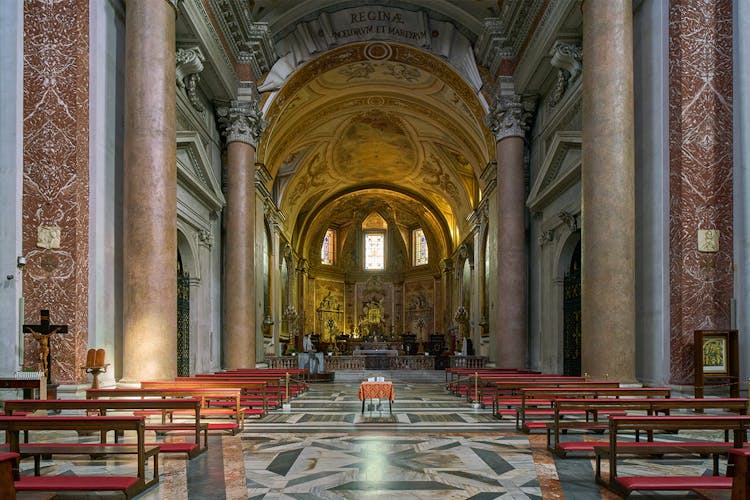
4The Meirdian Line
Another interesting feature of the Baths of Diocletian is the Meridian Line, a sundial that was added to the complex in the 18th century. It was used to measure solar time and was instrumental in reforming the Julian calendar. The line is created through a small hole in the ceiling that allowed the sun to shine onto a meridian line marked onto the floor.
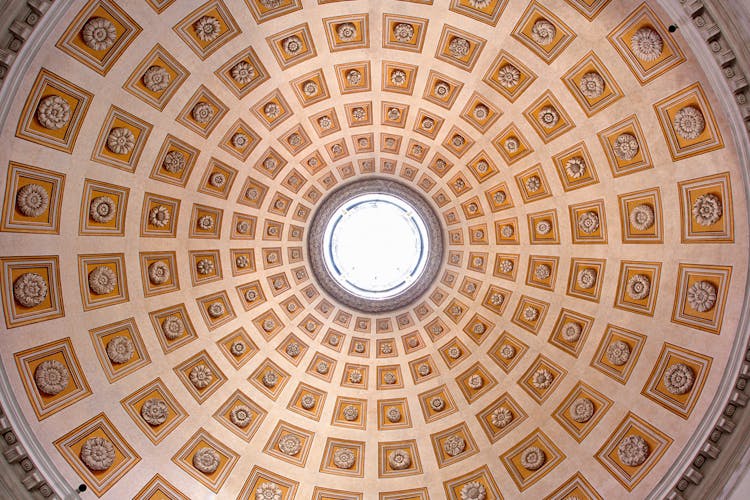
5Mystery Rooms
There are also mystery rooms within the Baths of Diocletian that have not yet been fully explored or excavated. These hidden chambers surrounding The Basilica of Angels and Martyrs hold the possibility of even more fascinating discoveries about ancient Roman life and culture.
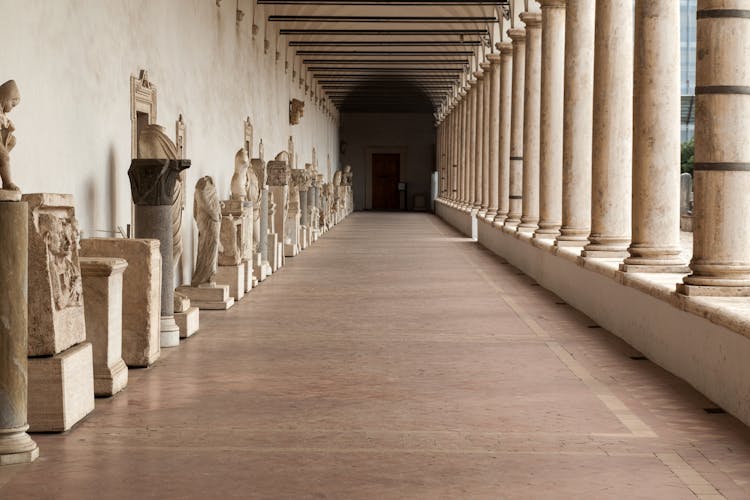
6Large Cloister
The Large Cloister is an expansive open-air space in the Baths of Diocletian that was once a bustling hub of social activity for bathers. Today, visitors can stroll through the lush green gardens and admire the ancient columns and arches that remain standing.
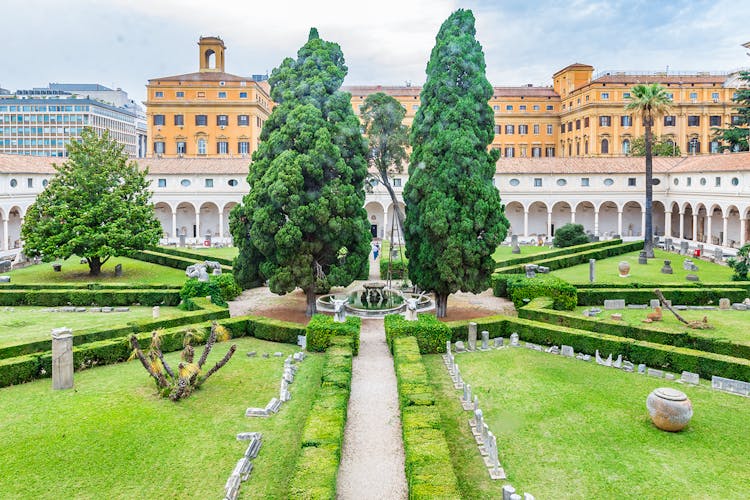
7Mosaic of Medusa
One of the most impressive pieces of art within the Baths of Diocletian is the mosaic of Medusa. This intricate work of art depicts the mythical creature with snakes for hair and a gaze that could turn people to stone.
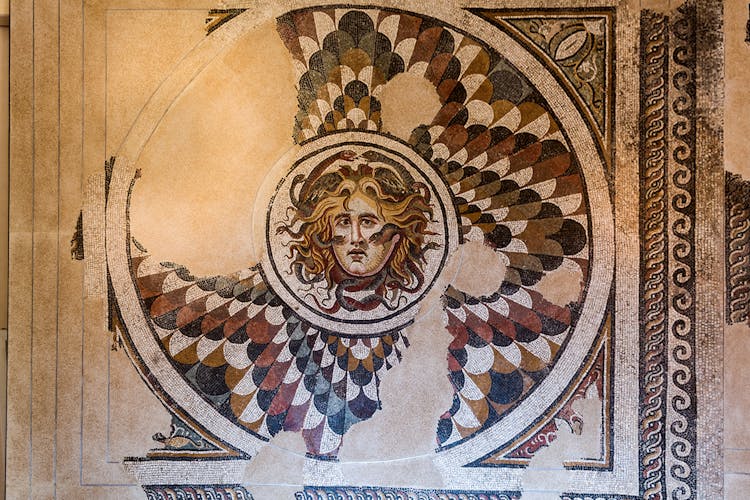
Best Time to Visit Baths of Diocletian
The Baths of Diocletian in Rome are best visited during the spring and autumn seasons, between March and May or September and November. During these months, the crowds are less, and the weather is pleasant, making it an ideal time to explore the site. It's also recommended to visit early in the morning or late in the afternoon to avoid the heat and the crowds. Moreover, ticket prices are lower during these times, making it a budget-friendly option for tourists.
Additionally you can learn more about the Best Time to Visit Rome.
Baths of Diocletian Opening Hours
- Tuesday to Sunday from 9:30 AM to 7:45 PM
- Last entry to the attraction is at 7:00 PM
- Closed on Mondays
- The attraction is closed on December 25 and January 1.
Getting There
- By Metro: Line A or B
Nearest Stop: Termini station - By Bus: 118, 671, 714
Nearest Stop: Termini/De Nicola bus stop - By Car: Nearest parking spot is Royal Parking which is 4 min away from Baths of Diocletian.
Insider Tips for Visiting Baths of Diocletian
- Wear comfortable shoes as you'll be walking around the expansive complex for a few hours.
- Take advantage of the audio guide or join a guided tour for a more informative experience.
- Check out the temporary exhibits inside the bath complex that showcase various art collections.
- Climb the stairs up the bell tower for a panoramic view of Rome and the bath complex.
- Don't miss the Michelangelo-designed church of Santa Maria degli Angeli, which is located within the bath complex.
- Visit the nearby Museo Nazionale Romano, which houses many artifacts and sculptures from the original bath complex.
- Photography is allowed, but you must avoid flash photography or the use of tripods.
- Entrance is free with the Roma Pass, a city card that also grants entry to other museums and attractions.
Restaurants Nearby

Culinaria is a cozy Italian restaurant that serves fresh and authentic Roman cuisine. The restaurant is located just behind Baths of Diocletian and offers a charming outdoor seating area perfect for a relaxing lunch.

Osteria Barberini is a family-run restaurant located in the heart of Rome. The cozy atmosphere and friendly staff make it a popular choice for tourists and locals alike.

For a unique dining experience near the Baths of Diocletian, check out Ristorante Terme di Diocleziano. Enjoy your meal while taking in the stunning views of the baths. It's a great place for a romantic dinner or special occasion.

Hosteria La Stazione is a traditional Italian restaurant located near the Baths of Diocletian. They serve a variety of classic Italian dishes such as pasta, pizza, and seafood. Make sure to try their homemade tiramisu for a sweet ending to your meal.
Other Attractions around Casa Amatller
Hotels around Casa Amatller
Luxury Stays
Economical Stays
Budget Stays
FAQs
The Baths of Diocletian is open from 9.30 am to 7: pm daily, except on Mondays.
Yes, guided tours are available for an additional fee, and it is recommended to book in advance.
The Baths of Diocletian were built in AD 306 by the Roman Emperor Diocletian. It was the largest public bathhouse in ancient Rome.
Yes, there are several sculptures and artwork on display, including the famous Esquiline Venus and many other ancient Roman artifacts.
Yes, there is an admission fee, and it varies depending on the type of ticket, such as a regular ticket, guided tour, or a combined ticket with other museums.
Absolutely, the Baths of Diocletian is one of the most interesting places to visit in Rome, and it offers a fascinating glimpse into ancient Roman architecture and history.
Yes, there are several facilities available, including a bookstore, a cafeteria, and restrooms.
The Baths of Diocletian is easily accessible by bus, tram or metro. The nearest metro station is Termini station, which is a couple of minutes walk away from Baths of Diocletian.


